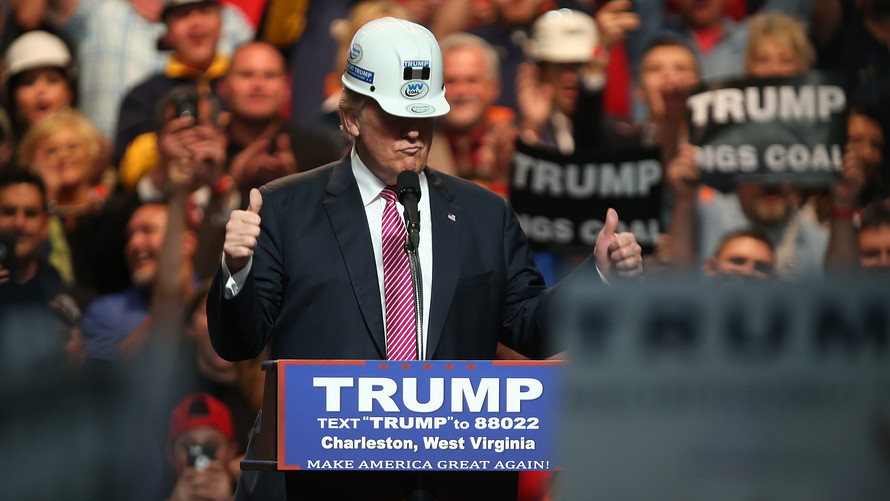It may be foolish to think that Donald Trump actually has solutions for addressing the wave of anger he rode into the White House. He’s spent decades stiffing contractors, outsourcing jobs and avoiding taxes.
But if he’s looking for good ideas, let’s show him where to find some.
There are at least a few areas where at least his rhetoric aligns with the goal of a more sustainable, inclusive economy. Infrastructure spending? Inner-city revitalization? Good jobs? Bring it on.
[blockquote author=”Jigar Shah, Entrepreneur” pull=”pullleft”]The actual transformation of the energy economy is as American as the Hoover Dam.[/blockquote]
Rather than bash Trump voters for choosing the wrong solution to their real problems, let’s showcase emerging solutions that start to address some of the dislocations caused by globalization. Trump says he wants to make America great again; he should start by looking where it already is:
Middle America is an engine of innovation. Across the country, cities and towns are leveraging their assets and their talent to revive and prosper in the global economy (for examples of such “city makers,” see James and Deborah Fallows’ excellent series in The Atlantic). Investors such as Village Capital’s Ross Baird and AOL founder Steve Case are finding gritty and determined entrepreneurs solving local problems in cities far from the coastal elites. Forbes has a good list of cities leading the revival of American manufacturing, which has created about a million jobs in the last six years (under a president named Obama). Companies, including the oft-maligned Walmart, are deciding they can do better by paying their workers more.
Renewable energy is a jobs strategy. Trump has already put a leading climate denier in charge of his environmental policy. But he doesn’t need to buy into clean energy as a climate-change solution, just the source, already, of employment for more than 2.5 million people in the U.S. A study last month, commissioned by the state of Ohio, found that solar and wind farms and increased energy efficiency could add hundreds of thousands of construction and manufacturing jobs and boost the state’s economy by more than $10 billion by 2030. “The actual transformation of the energy economy is as American as the Hoover Dam or the interstate highways, and even more earth-shaking,” says solar entrepreneur Jigar Shah.
Refugees and migrants are an asset, not a liability. The public perception of refugees and migrants needs a serious makeover. Immigrants, Trump’s biggest scapegoat, define not only America’s past but its prosperous future. America’s youth relative to other advanced economies is a function of its openness, and a huge competitive advantage. And in regions with high immigration, wages go up for all workers. A one percent increase in the population’s share of migrants, both low- and high-skilled, leads to a two percent increase in GDP per capita in the long run, according to the International Monetary Fund.
To be sure, there’s more work to be done. “Have we in the social innovation sector really put our best minds to producing living wage jobs in small towns in West Virginia?” Cathy Clark, a leading researcher on social-impact investing at Duke University, wrote on election night.
But for that matter, has Trump? Rather than remain an enabler of a new flavor of victimization, with a lazy response to changing demographics – that wall, for example – Trump could invest in America’s Rust Belt entrepreneurs, boost job growth through clean energy and help integrate, not alienate, immigrants.
Before the presidential debates, ImpactAlpha published an open letter to both Trump and Clinton from two leading social impact investors, Fran Seegull and Nancy Pfund, asking both candidates to lead “the impact economy.”
“What if we could create good jobs, educate our kids, fix our electrical grids and sewers and roads, address climate change, and in so doing all of that, we could also jet-propel the economy, too?” they wrote. “What if we could develop powerful new technologies that fuel prosperity here at home and then go on to share that innovation and prosperity with the rest of the world?”
Frankly, Clinton seemed like the more natural champion, as we discussed in a massively premature Returns on Investment podcast. Still, the growing movement of entrepreneurs, investors, local leaders and, yes, global citizens working to build a more open and inclusive economy is not going away. If Trump, and all Americans, are serious about building a fair and robust 21st century U.S. economy that benefits all of us, there’s plenty of work we can do together.
“Friends, start thinking about where you want to get involved. I am,” tweeted VilCap’s Baird. “If you’re scared, you’re not alone.”
[seperator style=”style1″]Disclosure[/seperator]
Photo credit: Mark Lyons/Getty Images











